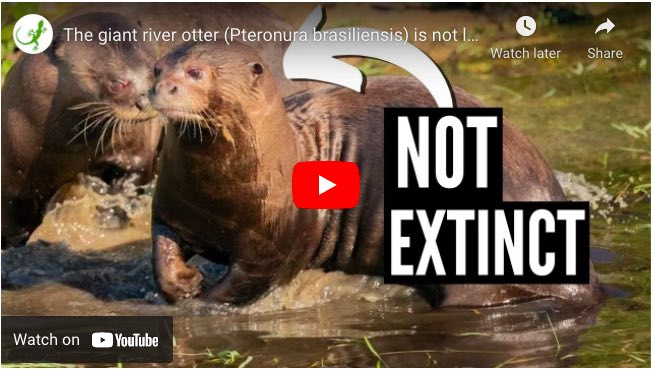The Atlantic Forest of Brazil was once the second largest rainforest in the world. It extended along almost the entire Atlantic coast of Brazil.

South America’s Atlantic Forest biome. Credit: NASA and Miguelrangeljr, Public domain, via Wikimedia Commons
When Europeans arrived in Brazil 400 years ago, they settled along the coast. Over the centuries the Atlantic Forest was cut down and the land was converted into farms, pastures, and towns. Now only about a quarter of the original forest remains.
What remains of the Atlantic Forest is still home to a high number of species, although the loss of habitat has put many species at risk. Over 10,000 species of plants and animals in the Atlantic Forest are considered threatened with extinction.
The golden lion tamarin monkey is one of the most famous threatened species in the Atlantic Forest. This monkey appears on the Brazilian 20-real bill, and is a symbol of the endangered and threatened species of the Atlantic Forest.

A golden lion tamarin. Image: Rhett A. Butler
Iracambi is a conservation organization in the Serra do Brigadeiro mountain range in Brazil’s Minas Gerais state. This mountain range is in the heart of the Atlantic Forest. Iracambi works to conserve and restore the forest and to help the community benefit from nature.

Iracambi is in the Serra do Brigadeiro mountain range, an area of extraordinary biodiversity and varied landscapes, from dense thickets of forests to bare pastures to extensive coffee plantations. Image © Sarah Brown for Mongabay.
Iracambi helps the forest and the community in many different ways. For example, they run tree growing and planting projects, and workshops about how medicinal plants can be used. Iracambi also runs environmental education programs for kids.
Dayana Duarte is the education coordinator at Iracambi. She helps run the Eco-leader Program. This education program is run by Iracambi in partnership with four local schools in the Serra do Brigadeiro mountain range.
Dayana Duarte explains what the purpose of the Eco-Leader Program is: “This Eco-leader Program aims to train young leaders in our region to protect the environment, especially the Atlantic Forest.”
The Eco-leader program is for young people aged 5-15. The program includes classes about wildlife identification and the history and importance of the Atlantic Forest.
One of the Eco-leader Program’s projects is to transform old pastures back into forests. They do this by collecting seeds of jatobá, a plant native to the Atlantic Forest. Dayana Duarte takes school kids on a field trip to collect the jatobá seeds.

Two young students use a tree pruner to cut down jatobá seeds during their eco-leader course, run by Iracambi. The seeds will be planted in the nursery as part of the NGO’s Atlantic Forest restoration program. Image © Sarah Brown for Mongabay.
Under the watchful gaze of his classmates, 15-year-old Yan Benini balances a tree pruner toward the leafy canopy of a jatobá. 15-year-old Matheus Perna de Faria yanks the rope attached to the blade of the pruner. Yanking the rope quickly closes the shears of the pruner and cuts through the stem. A tangerine-sized seed tumblies to the ground from the tree’s lofty heights. The boys pick up the seed and throw it in a sack. They then steady the pruner to collect the next seed.
These seeds will be grown in a nursery and later transplanted to transform old pastures into forests.
Iracambi hopes to replant 1 million native trees by 2030 and restore the lost Atlantic Forest. They have already planted 250,000 trees.

Iracambi’s education coordinator, Dayana Duarte (left), teachers two young students participating in the Eco-leader Program about the properties of jatobá seeds while out on a field trip. Image © Sarah Brown for Mongabay.

An outdoor nursery at Iracambi Research Center, in Minas Gerais, Brazil. Image © Sarah Brown for Mongabay.
The goal of this project is to help not just restore the forest, but to inspire young people about why taking care of the forest is important.
“There’s no point in planting a new forest if it isn’t going to be taken care of, if there aren’t people who are motivated to look after it,” says Dayana Duarte.
David Brown adapted this story for Mongabay Kids. It is based on an article by Sarah Brown, published on Mongabay.com:
More resources for carers and educators:
Learn more about Iracambi and their conservation projects:
Turn on closed captions for English subtitles.






